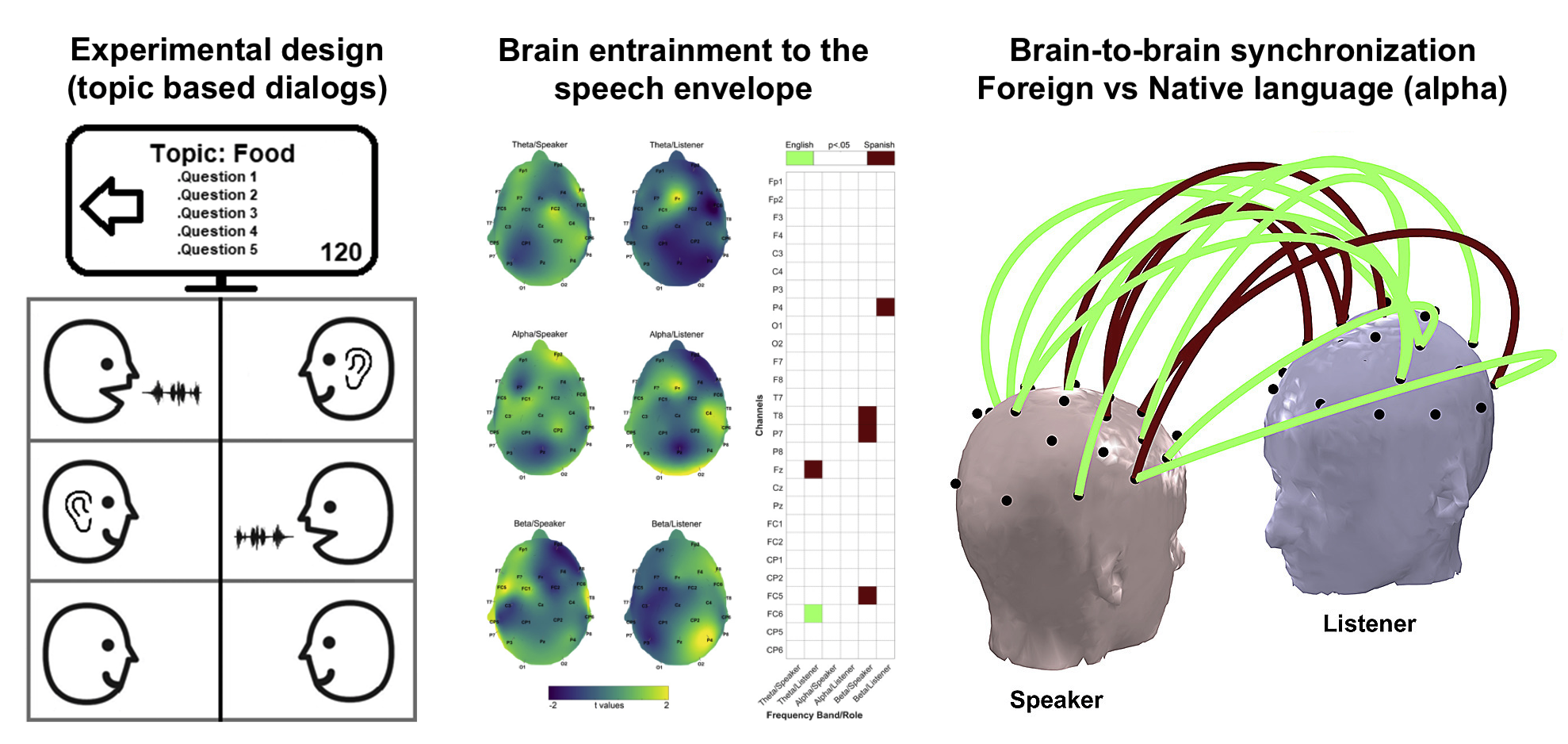Differential brain-to-brain entrainment while speaking and listening in native and foreign languages
Abstract:
The current study explored interbrain neural coupling when interlocutors engage in a conversation–like situation using different languages known to them. To this end, electroencephalographic hyperscanning was used to study brain-to-brain phase synchronization during a two-person turn-taking verbal exchange in either a native or a fluent nonnative (foreign) language context. Results show that the coupling strength between brain signals in the alpha frequency band was increased for both language contexts. Electrode-pairs containing significant effects were broadly distributed across the scalp of the listener and speaker: Five electrodes show a larger synchronization in the native language context (Spanish), and nine in the foreign language context (English). These results indicate that between brain similarities in the timing of neural activations and their spatial distributions change depending on the language code used. We suggest that factors like linguistic alignment, joint attention and brain-entrainment to speech operate with a language-idiosyncratic neural configuration, modulating the alignment of neural activity between speakers and listeners. We concluded that linguistic context should be considered when addressing interpersonal communication. The findings here open doors to quantifying linguistic interactions.


Leave a Reply